Jonathan Gold’s 101 Best Restaurants: 25-1
More: 26-50 | 51-75 | 75-101
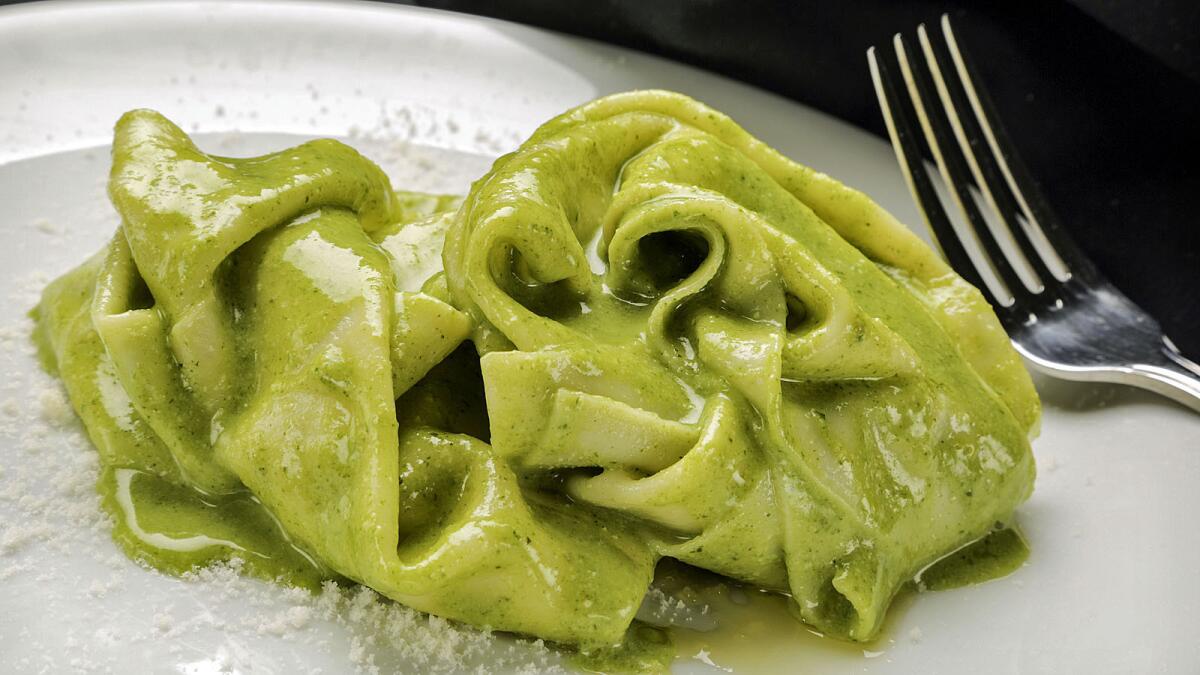
25 The Factory Kitchen
The most sensational new pasta dish of the year was probably the Factory Kitchen's mandilli — fragile handkerchief pasta crumpled over an almond-thickened pesto, which essentially melts the second it hits your tongue. Angelo Auriana's new restaurant is a compelling hybrid, an informal trattoria with rather formal northern Italian cooking. The dishes are composed and careful: sea robin roasted with olives and cherry tomatoes, pancotto with fried duck eggs, and complex casonzei pasta with browned butter and sage. Focaccina di Recco is a marvelous thing, a kind of crisp, translucent Genoese version of a Lebanese borek stuffed with herbs and milky Crescenza cheese.
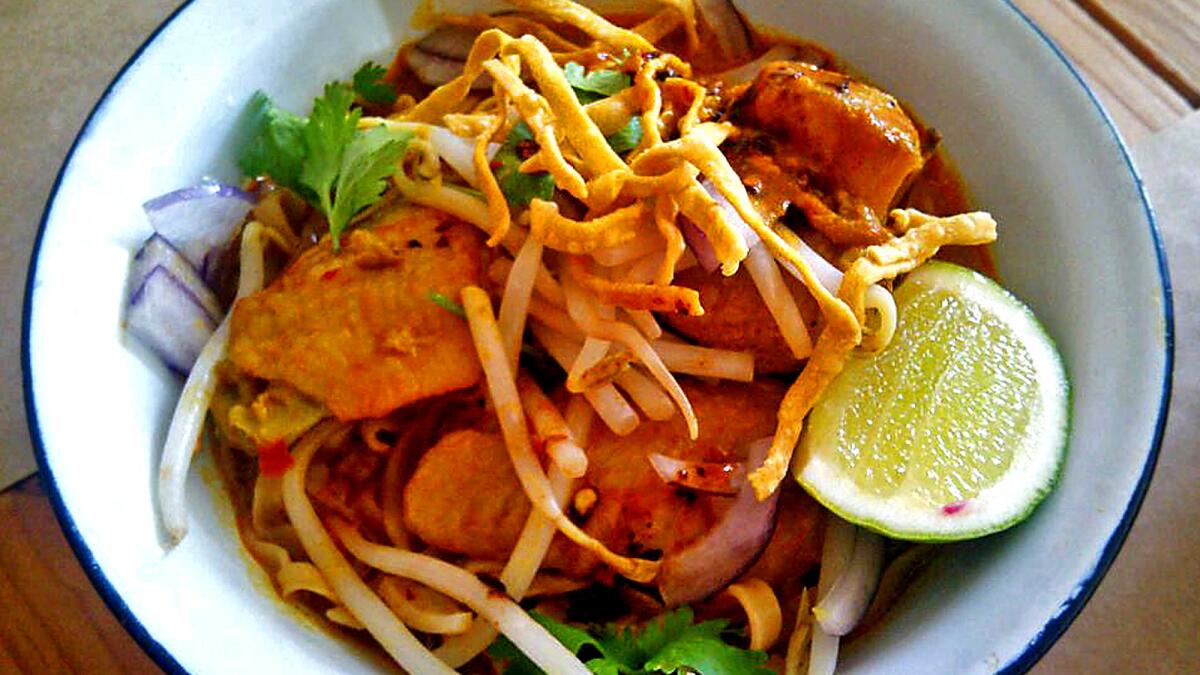
24 Night + Market
It may be an optical illusion, but Night + Market is looking more like a rec room with every visit: bright colors, banners on the walls, china made out of cheap tin. It's as if Talesai, on the other side of the wall, is where the parents are having a sedate dinner, and Night + Market, whose chef Kris Yenbamroong is actually the son of the Talesai owners, is having a loud party for his friends. (Night + Market Song, the new spinoff in Silver Lake, looks even more like an apartment building's common room done up for a birthday party.) Yenbamroong is cooking strong, unmodulated northern Thai dishes here: fiery nam priks, grilled pig collar, steamed blood cakes, sour sausages and other pungent drinking food from the countryside around Chiang Mai.
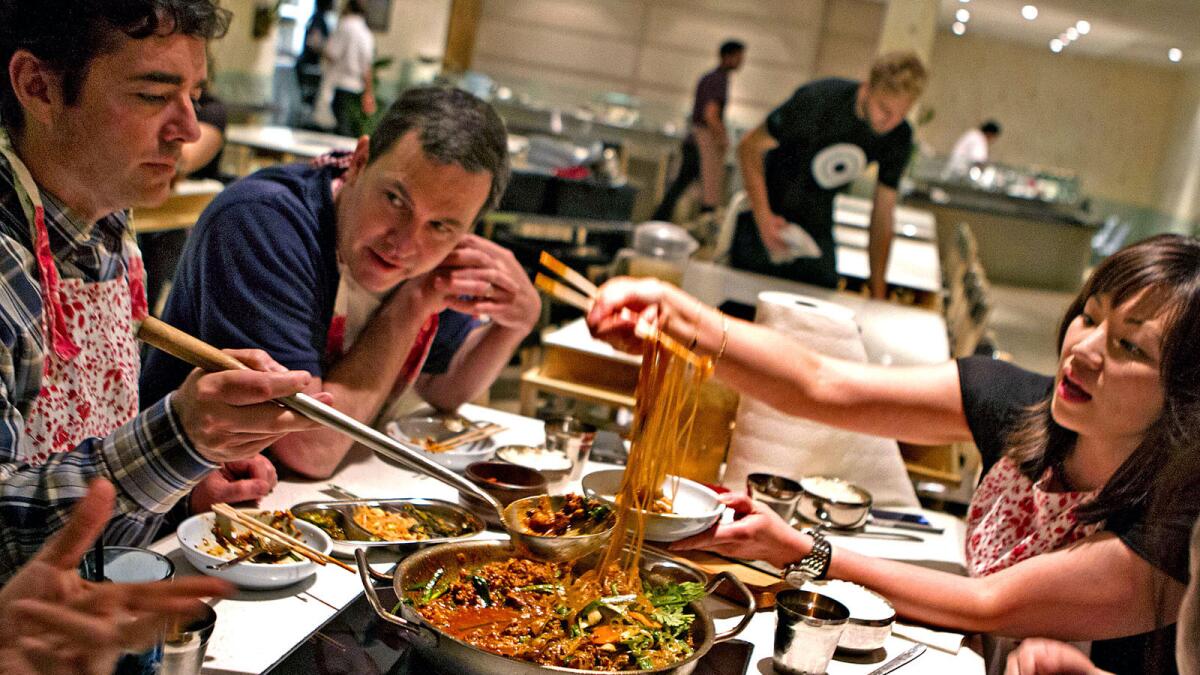
23 Pot
To understand Roy Choi's new restaurant, you've probably got to swallow a lot of haterade. Because the bareness of the hotel-lobby restaurant, the pounding hip-hop and the menu of unreconstructed Korean stews speaks to an extremely specific Koreatown experience that many of Choi's contemporaries do not share. He charges a buck or two for kimchi instead of giving it away, which may be the local equivalent of spitting on the flag, and his newspaper-sized menu, decorated with an enormous photograph of an elderly Burmese woman smoking a cheroot, makes his customers order vast tureens of Boot Knocker instead of budae jjigae, Jamaal Wilkes instead of soondubu and Shorty instead of galbi jjim. The uni dynamite rice bowl, the closest thing to a must order, is slicked with spicy sauce. The soju cocktails are flavored with things like kimchi and curry. Somebody's having a good time — everybody's having a good time — but it is possible to find more fully realized versions of most of the dishes, even the crisp, LP-sized potato pancakes, elsewhere in Koreatown. But this is Choi's homage to the broad L.A. Korean American food universe in which he was raised, and it is vital and engaging in a way that even the best of the more sedate specialists in dak dori tang or eun daegu jorim can never be. Pot isn't a careful re-creation of a Seoul buljip. It is a raucous, sizzling, loving creature of Koreatown L.A.

22 SAAM
A few years ago, most chefs associated with the movement popularly known as molecular gastronomy, after the book by the same name by French writer Hervé This, decided that they'd rather be known as modernists. All food, they insisted, was made of molecules, and the hydrocolloidal magic tricks they performed were more or less extensions of what chefs had been doing for centuries with egg whites and gelatins. But as with its counterpart in the art world, modernism turned out to be just another style. El Bulli's Ferran Adrià was a great chef, but his foams, gels, mists, snows and edible plastics were less the end-point of culinary history than a scenic stop along the way. And SAAM, the chef's tasting room within Bazaar, the restaurant by José Andrés, Adria's most successful disciple, is no less than a museum of modernist art. A (mandatory 22-course, $150) tasting menu may include a cocktail crowned with a flowing head of truffled mist, a duck-filled dumpling whose skin is fashioned from pale cotton candy, a madeleine fashioned from chilled parmesan ganache, aged-rice risotto enhanced with melted cheese, and a bit of uni with a mango pouch, just because. The dishes are exquisitely constructed: An encapsulation of liquid cheese that might be bouncy and over-thick in Bazaar's main dining room will be delicate at SAAM. You will encounter more edible gold than you have ever seen in your life, including a gold-plated, truffle-infused take on a Ferro Rocher candy. You will take a dozen Instagram photos. And as at a Buzzcocks reunion show or a Picasso retrospective, you will become nostalgic for an era you may have never known.
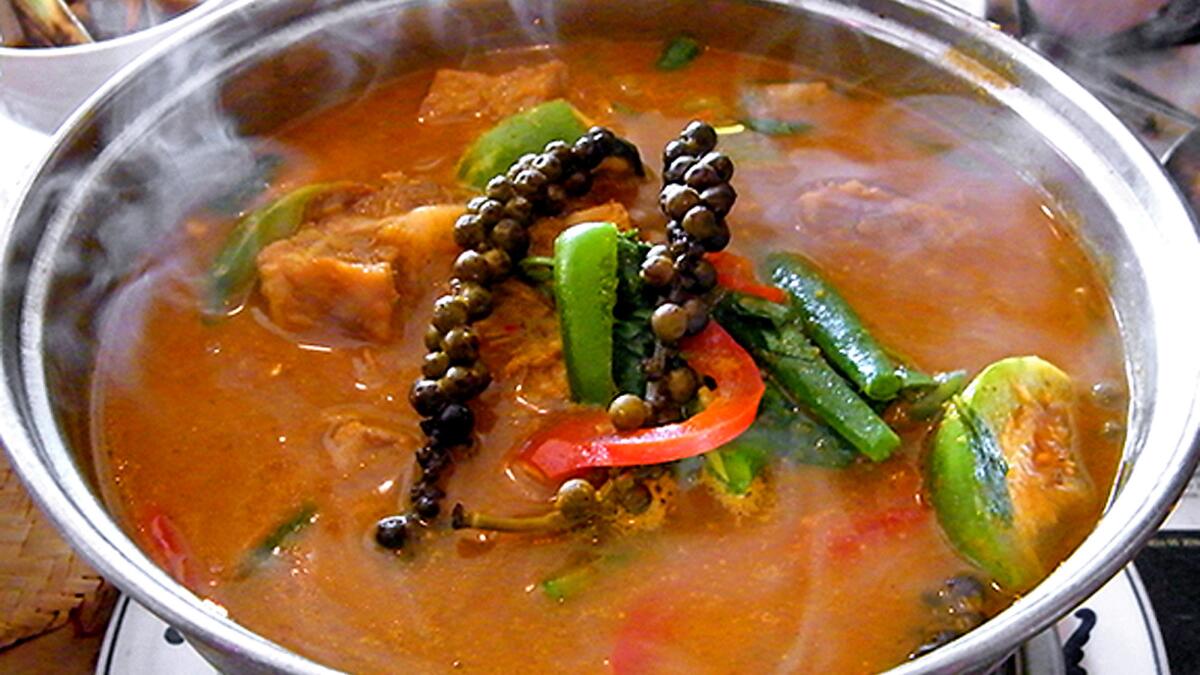
21 Jitlada
You could try to eat your way through the typed list of specials at the back of Jitlada's menu, a roster of ferociously spicy southern Thai dishes mostly unavailable outside Nakhon, but Suthiporn "Tui" Sungkamee will make it pretty difficult for you to succeed. The list of regional specials balloons by the week, beyond the acacia blossom omelets, stuffed fish balls and beef with cassia buds to exotic curried innards, eel with stinky sator beans, frog legs with turmeric and hundreds of other things, in such profusion that most of us tend to end up with the coco mango salad and the fried morning glory once again. If you're lucky, Sungkamee's sister Sarintip "Jazz" Singsanong may volunteer to make you one of her notorious Thai hamburgers.
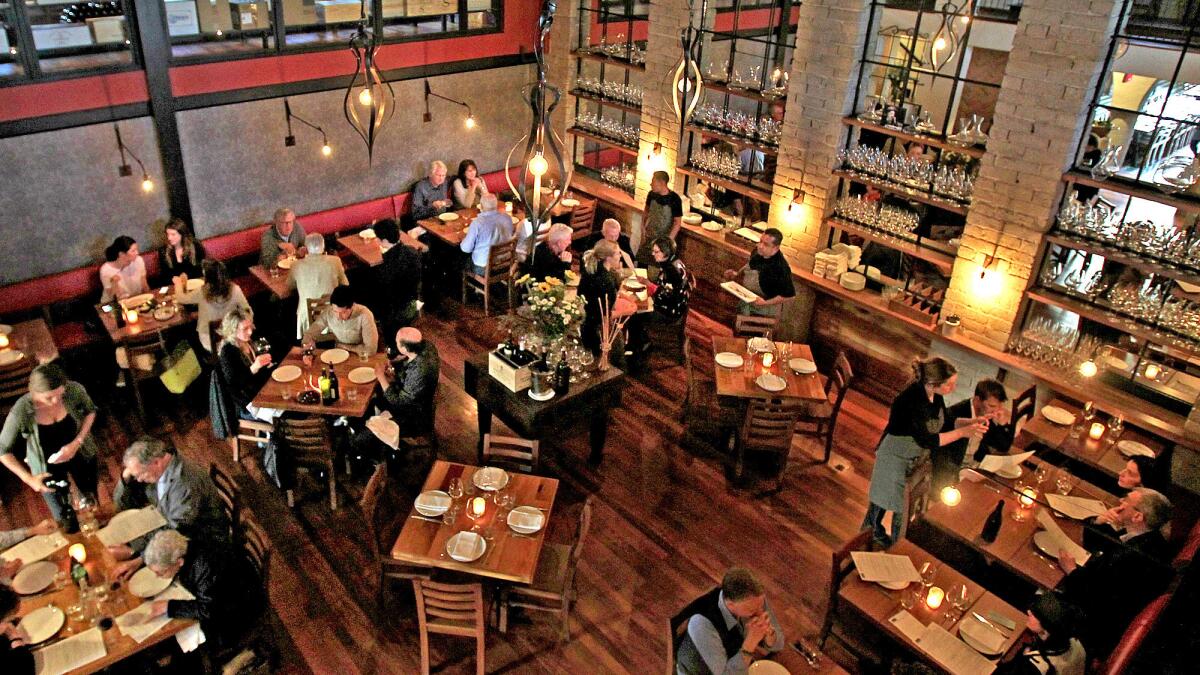
20 République
Your feelings about République may well depend on whether you mind paying a $5 supplement for mind-blowing Normandy butter ("ordinary" butter is free), whether you would prefer pan drippings and whether you consider an evening of cheese, duck-liver mousse and Margarita Manzke's scorching-hot baguettes to be an evening well spent. République occupies the former Campanile space, chopped and channeled into an enormous bistro, and the chef is Walter Manzke, whose suave, modern French cooking you may remember from Bastide and Church & State. You find a lot of big-flavored bistro tropes here, including cured headcheese with lentils, Alsatian tarte flambé, a wide selection of oysters, steak frites, snails en croute and Santa Barbara spot prawns Provençale. Manzke is very good at this stuff. There's also a lot of the crunchy-groove cooking, the wood-roasted Brussels sprouts and curried cauliflower, that the cool kids are all cooking now. Will République grow to encompass Manzke's considerable skills with haute cuisine, or will it remain populist and delicious? At this point, it's hard to tell.

19 Church & State
You can find something like Church & State in every arty warehouse district in America, a dim, loud bistro with industrial flooring and skeins of Edison bulbs, serving familiar French dishes to a crowd looking for its personal Montparnasse. The formula is so classic by now that everyone has forgotten whether the snails under little caps of pastry are supposed to be ironic or whether you're eating them because the herbed garlic butter tastes so good, or whether that glass of absinthe is louche or a little bit passé. What the rest of those restaurants don't have, though, is Tony Esnault in the kitchen, a chef long associated with Alain Ducasse whose sturdy terrines, burnished meats and carefully composed vegetable dishes are remarkable in their depth of flavor. You may never taste a better coq au vin, underpinned with a deep bass note of thyme.

18 n/naka
The ideal of Japanese kaiseki, multi-course feasts designed to express the mood of a season, has quietly supplanted the more conventional French model in ambitious California restaurants. But n/naka may be the first dedicated kaiseki restaurant in Los Angeles, at least the first outside the Japanese expatriate community, and the sheer level of cooking in this modest bungalow eclipses what you find in most of the city's grand dining rooms. Niki Nakayama, a veteran of both Mori Sushi and kaiseki-oriented Japanese ryokan, grows the vegetables and herbs for her restaurant in her Arcadia backyard, inflects the hairy crab or madai with nasturtium petals and truffles as well as the expected flourishes of yuzu or grilled maitake mushrooms, and isn't beyond incorporating flavors from Italy or Hong Kong, although the soul of her cooking remains wholly Japanese. It is occasionally difficult to ascertain whether the most impressive bit of a dish is the chewy slab of Japanese halibut fin or the thimble-sized cucumber used as garnish, whose texture has been transformed into something almost luxurious through a hundred tiny slashes of her knife. The restaurant is expensive, serving only 13-course kaiseki meals at $165.

17 AOC
AOC has been an institution for so long that it seems almost odd to settle into the Moorish patio at its new grown-up location. Ordering the same old bacon-wrapped dates feels a bit awkward. But then you settle in with a bowl of wood-oven clams with green garlic and a glass of vinho verde, and it seems like old times. If you've been to Lucques or Tavern, you know Suzanne Goin's style: strong flavors, puddles of broth and extremely seasonal produce; slivers of lemon peel where other chefs tend to use zest; lots of olives, fennel, thyme, chiles and other hints of the Provencal palette even when the dish in question comes from elsewhere. Duck confit or "Ode to Zuni" roast chicken you expect; Balinese suckling pig you may not. But you could be happy here ordering nothing but vegetables: black rice and chewy farro with pine nuts; lightly curried cauliflower, or soft, almost soupy polenta with spears of charred asparagus.
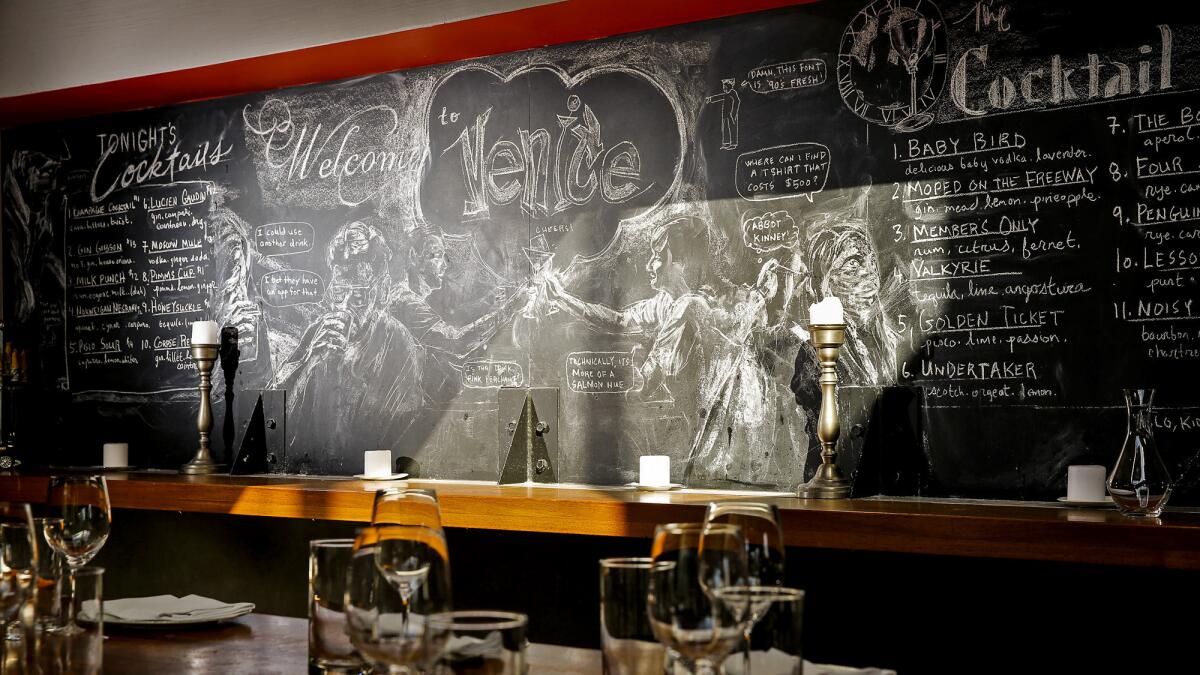
16 The Tasting Kitchen
Casey Lane is the dark prince of "No Substitutions nor Modifications" in Los Angeles, a chef who tacitly blurs the lines between restaurant and art project, or did for years anyway, and maintains a menu that seems to consist mostly of variations on pasta, salad, beans and toast. It is delicious toast, of course, thick, made with great bread, and wood-grilled, served with things like soft butter, old balsamic, bone marrow, house-made ricotta or goat cheese and figs. The basic impression is of Italian cooking translated into an odd American dialect, in which grilled anchovies are laid so beautifully on the plate that you rather suspect there's an art director, and plates of asparagus with grapefruit or garganelli with pickled chiles and the Italian bacon called tesa are remarkable for their purity of flavor. The fairly expensive wine list is impenetrable even to experts in Brunello and Chianti, but the staff is well-versed in its intricacies. The brunches, which include things like short-rib hash and bacon-stuffed waffles with fried chicken, are legend even in brunch-obsessed Venice.
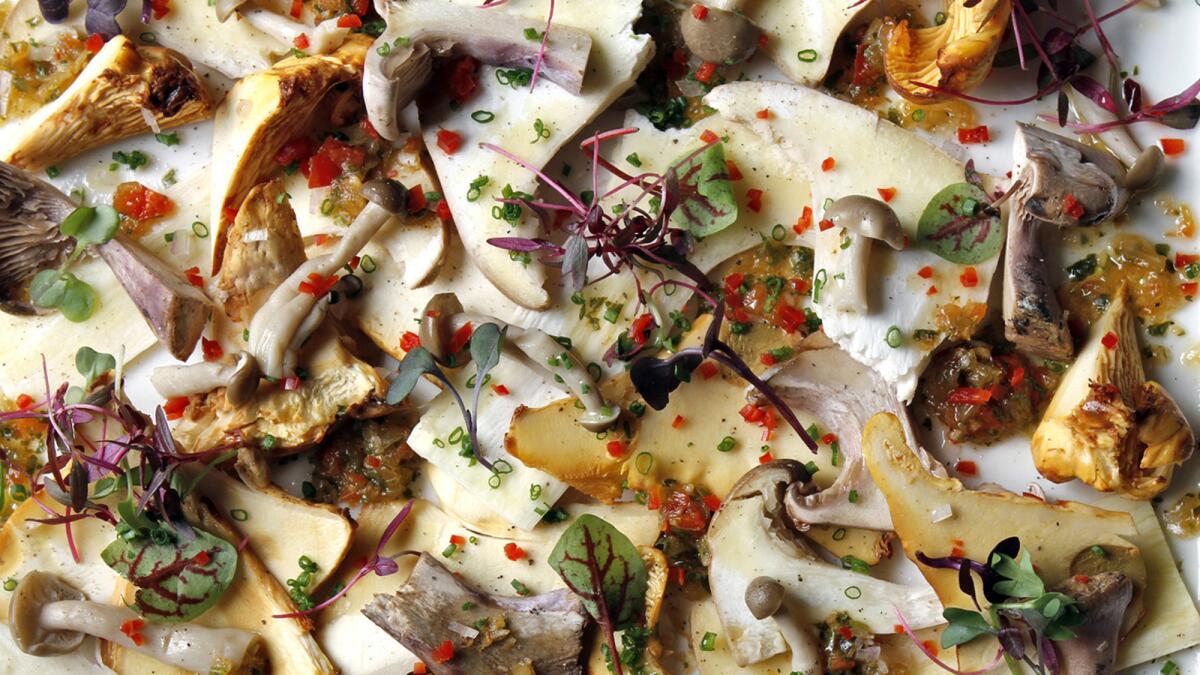
15 Rivera
We should all be a little more obsessed with John Sedlar than we seem to be at the moment, following his experiments with tamales, modernist tortillas and dim sum-style lonchera carts with the raptness we devote to gifted food-truck impresarios and tracking his flirtations with Spanish, Soviet and pre-Columbian kitchens. He didn't single-handedly invent new Southwestern cuisine, squirt-bottle saucing and high-end pan-Latino cooking in the 1980s, although he might as well have, and as chef of Rivera, the most ambitious Mexican restaurant in the city at the moment, he has coaxed the old flavors into the context of his sleek, modern cuisine. If a thing can be done with masa, wild mushrooms or chiles, he has done it, probably twice, and in ways that are occasionally difficult to comprehend. But his cooking is before all delicious, and Julian Cox's Mexican-influenced cocktails are mysterious, smoky and deep.
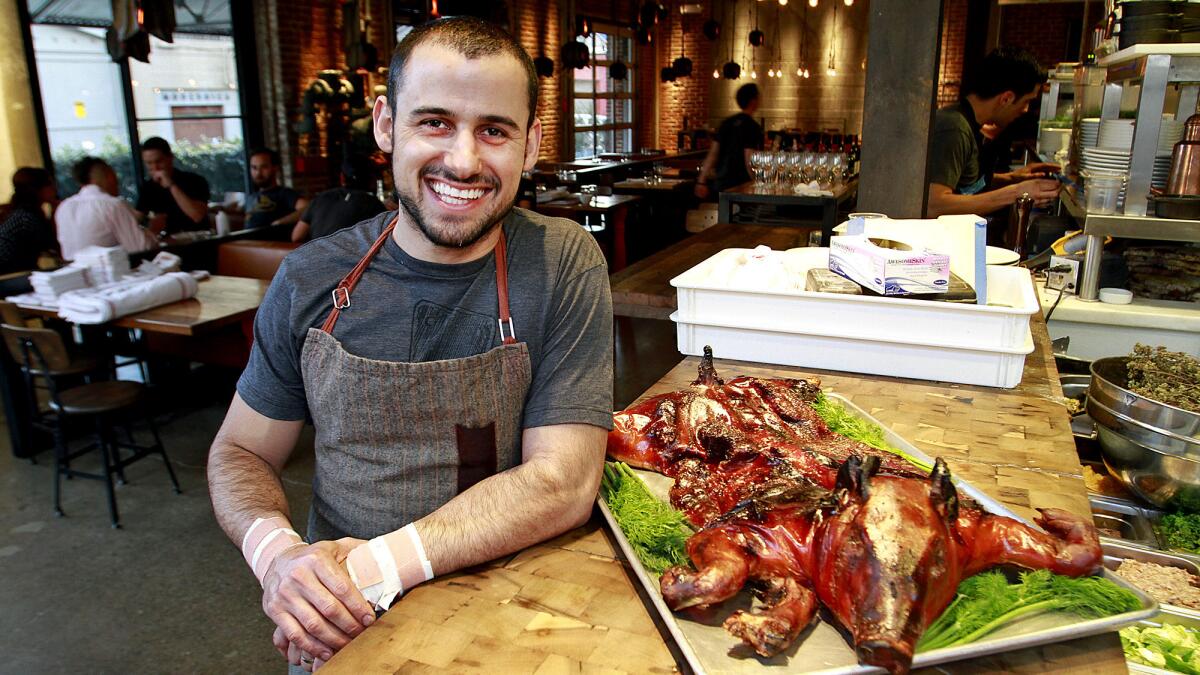
14 Bestia
Bestia exemplifies the modern Italian restaurant in Los Angeles, deeply invested in curing its own meats, preparing just enough offal to satisfy the nose-to-tail crowd and not only making its pasta by hand but also serving it a little underdone so that the fusilli in lamb sauce almost hurts. Grass-fed beef heart tartare? Sea urchin crudo with lardo? Veal tartare with tonnato sauce? Ori Menashe is right there with you, even if you're just at Bestia for Genevieve Gergis' Carnaroli rice pudding with fruit. If you have heard of one bottle in five on the rustic-leaning list, you are probably studying for the master of wine exam. At this point, Bestia may be best known as the downtown restaurant you can't get into, so you should probably plan your next dinner there a month in advance.
13 Red Medicine
Red Medicine isn't a Vietnamese restaurant anymore — not that it ever persuaded most people that it was one in the first place. The locavore neo-Nordic principles always lurking beneath the spring rolls and porridge have come to define Jordan Kahn's cuisine. You will scoop English peas, unsweetened lemon custard and trout roe from the bottom of goldfish bowls sealed with glaciers of frozen peapod juice, and you will learn to appreciate burnt lettuce leaves as a condiment. You will have waitresses treat you as a slow schoolchild when you don't immediately grasp that the coal-like lumps in a crab dish are pickled pioppini mushrooms rolled in coal ash. You will encounter as many kinds of yarrow in a dish of uni with almond milk as exist on heaven and on earth — they like to forage here — and you will encounter sequoia shoots both as an herb and as the piney flavoring of a dessert. There has always been something a little punk-rock about Red Medicine, where the talents in the kitchen are sometimes offset by spectacular PR missteps, but it has become hard to imagine the Los Angeles restaurant scene without it.

12 Alma
In the year since we last checked up on it, Alma was named as the best new restaurant of 2013 by Bon Appetit, Food and Wine chose Ari Taymor as a best new chef and the tiny restaurant, next to a taxi-dance joint on South Broadway, decided to serve only a $95 tasting menu. Taymor still uses his share of foraged chickweeds and oxalis blossoms, but nearly all of the produce comes from Courtney Guerra's Flower Avenue garden in Venice. You are just as likely to run into the tofu-seaweed beignets, broken beets with apples, and frozen duck liver with smoked maple and carrots, but it all seems a little more purposeful these days, from the tiny English muffins served with uni to the grapefruit with the Dungeness crab. Does Alma deserve the flood of praise? A qualified yes: Taymor occasionally seems too interested in aesthetic problem-solving, and his effects tend to be less than grounded in anything beyond themselves. Still, dinner here is never less than fascinating.
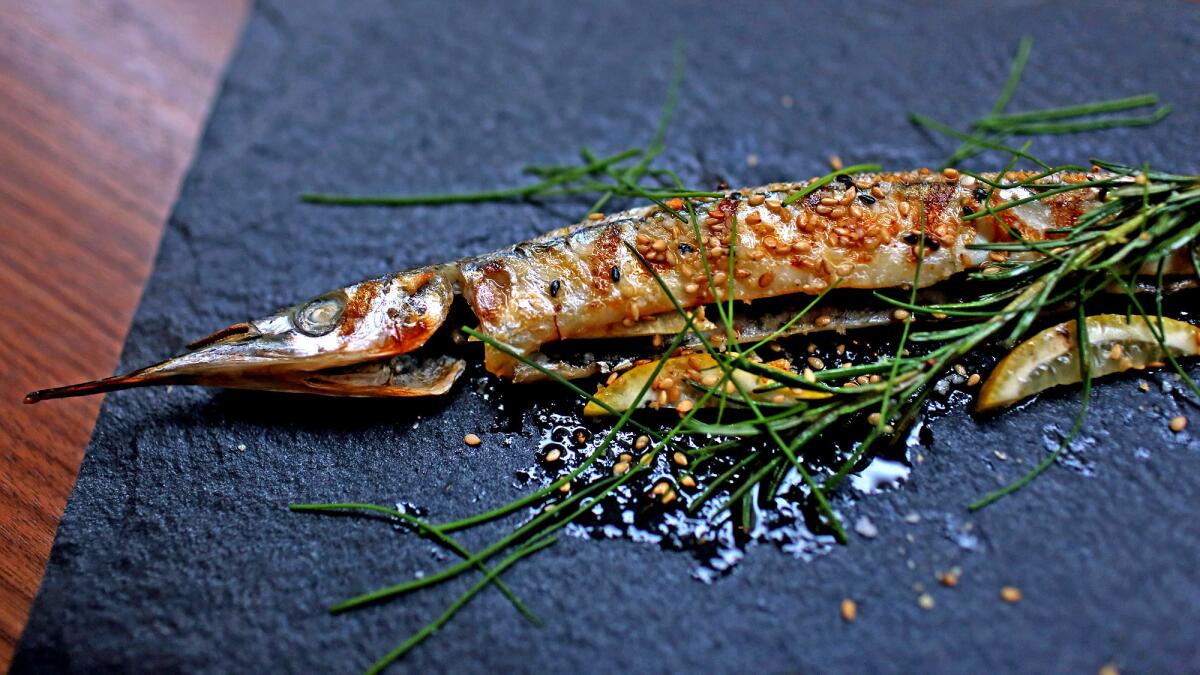
11 Orsa & Winston
What ties Josef Centeno's cooking together? What might a plate of grilled greengage plums with fresh ricotta, rhubarb and tamarind have in common with a Japanese egg custard flavored with sunchokes, celtuce and smoky wild mushrooms? Why would a gifted chef spend hours composing a dish expressing the various textures of a yellowtail head? What is the point of sprinkling a savory panna cotta with pungent cypress seeds? Centeno is obsessed with detail; the tweezer-placed herbs, the drops of exotic oil, and the miniature, perfected scale. He uses local produce when relevant and global products when they're not. He has the knowledge and will to mix traditions without losing sight of the fact that they are traditions. The intimate omakase restaurant Orsa & Winston is the showcase Centeno's followers have been hoping for since he burst onto the scene a decade ago, and the menu, which changes daily, is as multicultural as the city it serves.
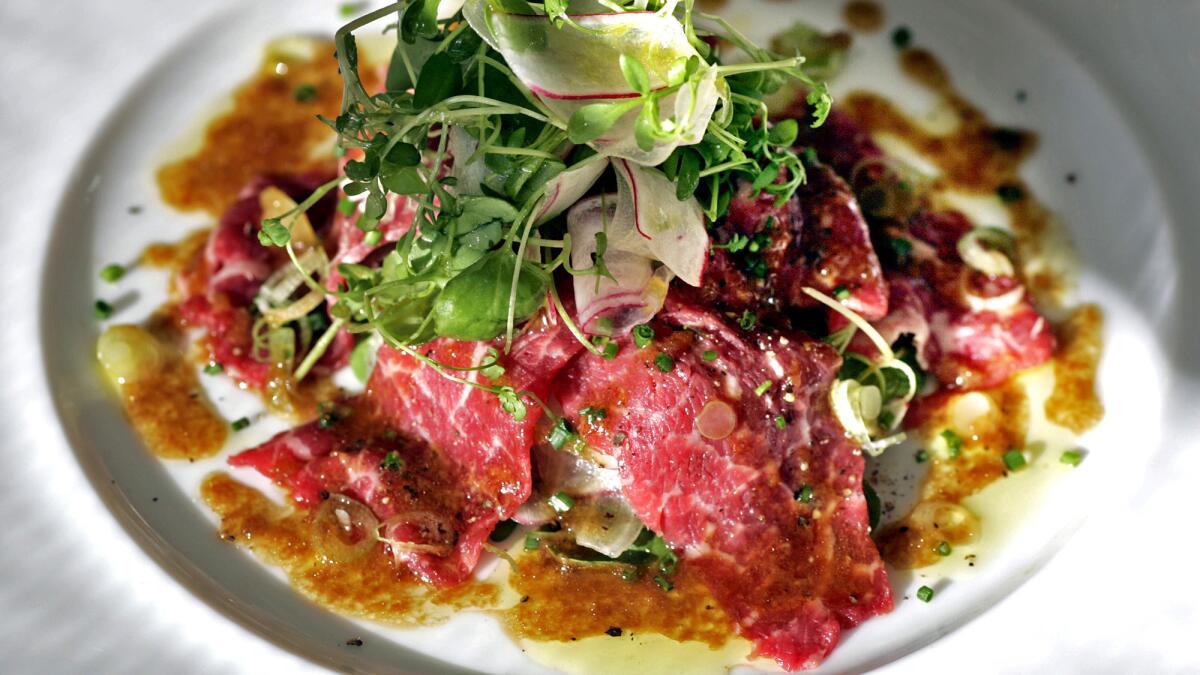
10 Cut
It is possible, I think, for a restaurant to be too good, to realize its given task so efficiently that it basically renders itself obsolete. Much of what we look for when we go out to good restaurants, after all, is the pursuit of perfection — the idea that the next sip of Burgundy, the next spoonful of crème brûlée, will finally be the one that approaches its Platonic form. And while Wolfgang Puck's steakhouse Cut is admirable in so many ways — its science-fiction-severe Richard Meier design, the bone-marrow flan and the crisp little knishes that sometimes show up as an amuse bouche — the Wagyu rib-eye imported from Japan is so rich, so perfectly beefy, that it is unnecessary to eat more than a bite or two. This is not a bad thing. It leaves room for chef Ari Rosenson's truffled lobster, sliced tongue with salsa verde and lightly curried short ribs.
9 Animal
Do you remember the first time you tasted a bacon dessert? Did you notice the moment that every restaurant in town seemed to be serving beef tendon puffed into airy snack crackers, and did you ever wonder why? A visit to Animal can occasionally feel like a forced march through an anatomy handbook, but Jon Shook and Vinny Dotolo have a gift for making curried brains, fried pig's ear, crunchy sweetbreads and oxtail poutine seem as routine as steak and roast chicken, and by the time you work your way to the smoked turkey legs and balsamic-glazed country ribs, you may be wondering why you didn't order the crispy pig's head or veal tongue instead. Animal is the kind of restaurant that other chefs dream about, a kitchen that renders its darkest, and happiest, thoughts in smoking, dripping flesh.
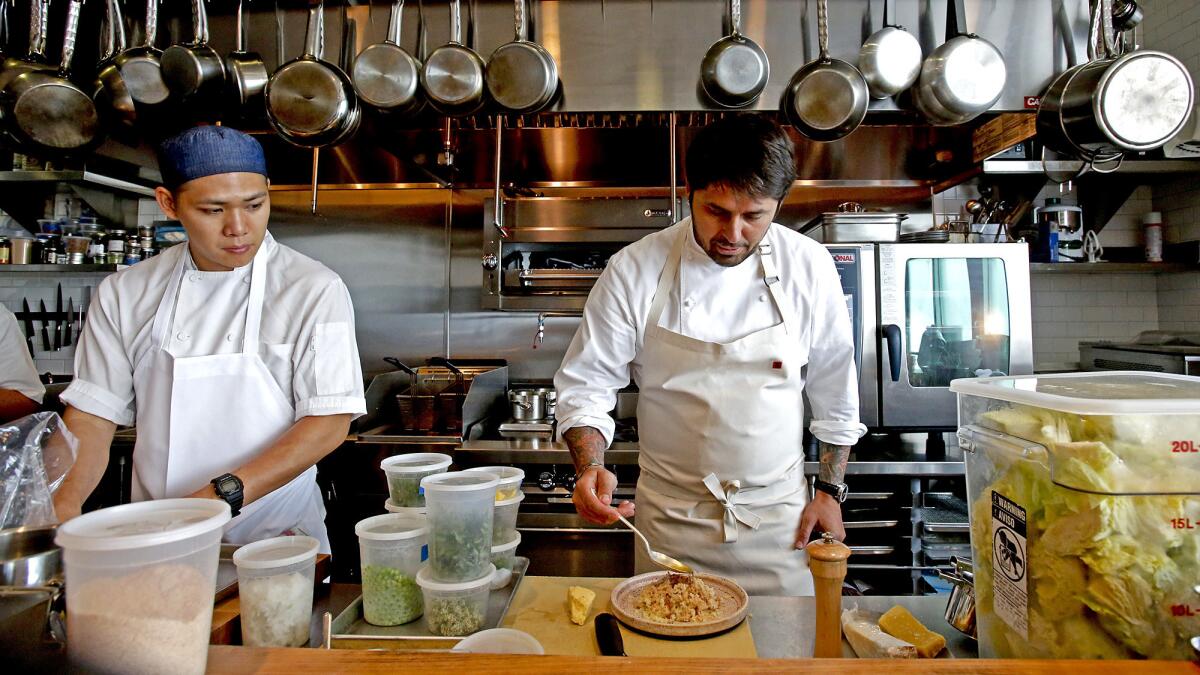
8 Trois Mec
Ludovic Lefebvre is either the chef who saved French cooking in Los Angeles or is the hell-born agent of its destruction. Personally, I think he may be both. He is a protégé of Pierre Gagnaire, Marc Meneau and Alain Passard who is perhaps best known for his fried-chicken truck and his snarling Gallic presence on reality cooking shows. He introduced the city to full-bore modernist cuisine and then kicked his liquid nitrogen canister to the side of the road. He is a master of the nuanced tasting menu who found his voice cooking at pop-ups in a sandwich shop. Seats at his tiny restaurant, hidden in a former chain pizzeria that still bears its sign, can be as hard to come by as courtside seats at a Lakers game, and trying to land one can make a potential diner yearn for a culinary Stub Hub. As good as his truffled grilled cheese with buttermilk and honey or his potato pulp with bonito flakes and Salers cheese may be, repeat visitors may wish that he would occasionally change things up. But it is the possibility of surprise that brings you back and back again, of experiencing what a supremely gifted chef can do with rare Iberico pork, beef with smoked peanut butter or sushi rice with brandade. He has made the grilled cabbage leaf practically a sacrament, and not just because he dusts it with crushed almond candy. For all of its maddening drawbacks, Trois Mec is the closest thing in the United States to the ecstatic improvisational cooking at Parisian bistronomy shrines such as Frenchie and Le Chateaubriand.
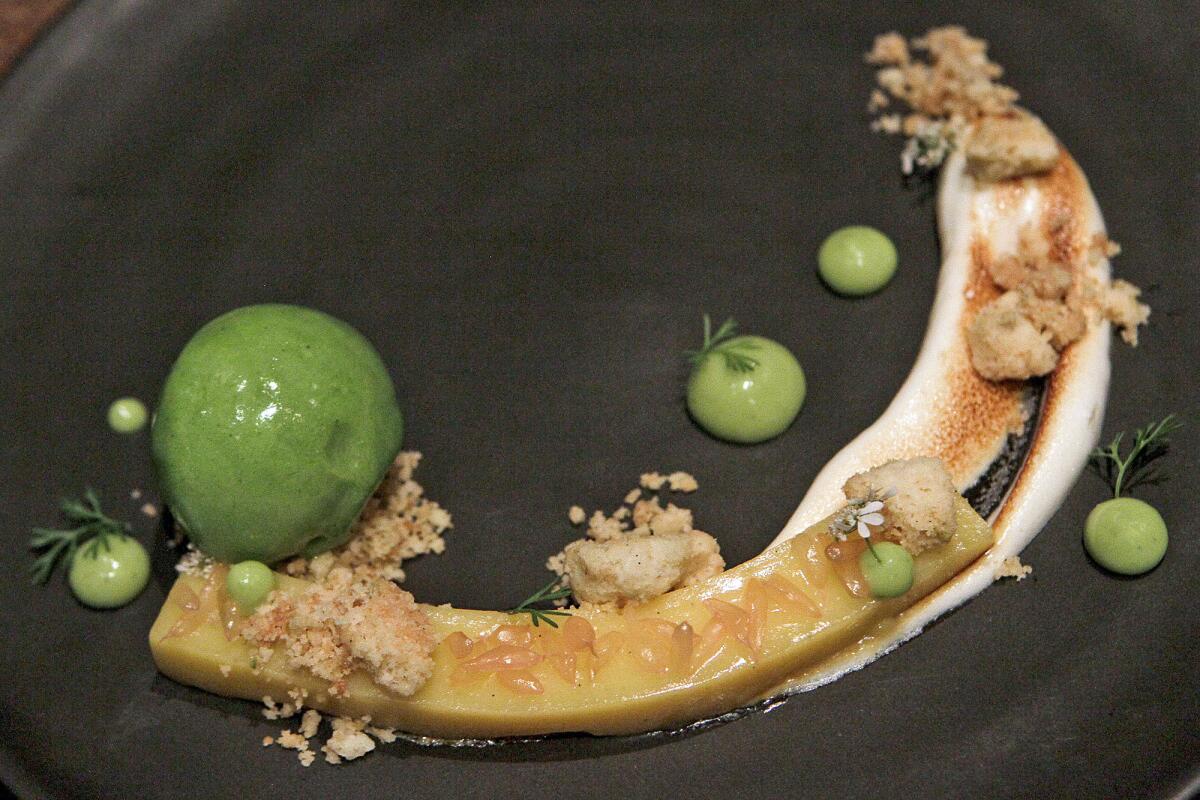
7 Ink
If you cherish good reasons to hate a new restaurant, you will probably find everything you're looking for at Ink. The walls of the dining room look as if somebody rubbed them down with shoe polish, and the music is unbearably loud. If you're down on celebrity chefs, you'll be happy to learn that Michael Voltaggio is probably the Joe DiMaggio of "Top Chef," a guy not beyond inflecting his steak tartare with horseradish and liquid nitrogen, transforming naked egg yolks into gnocchi or serving his Brussels sprouts with pig's ears and thin sheets of lardo. That couple at the next table, the ones eating potato charcoal with vinegar and braised beef cheeks with parsnip bark, look altogether too pleased with themselves. But then you try the melty-soft cuttlefish with toasted hazelnuts or the lamb belly with yogurt curds, and you know. Voltaggio is as obsessed with that potato polenta with bone marrow in front of you as you have ever been with anything in your life.
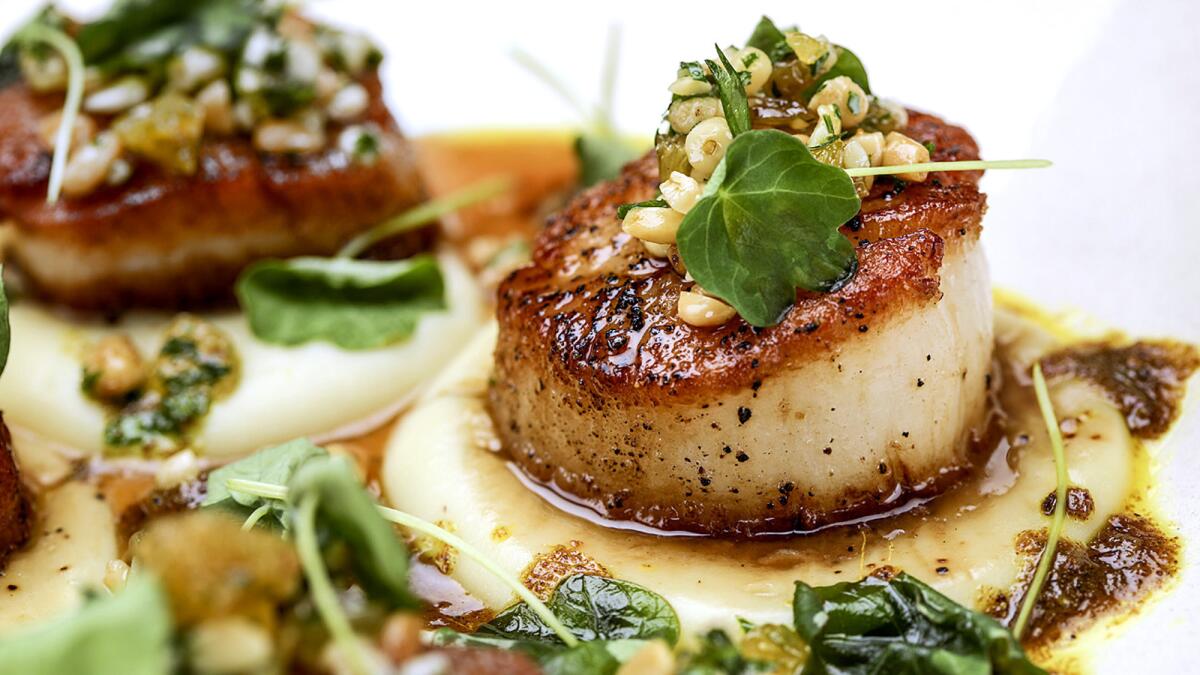
6 Rustic Canyon
If you are even remotely interested in the restaurant world, you probably know the odd trajectory of Jeremy Fox, the former Manresa chef who transformed Ubuntu, a yoga studio annex in Napa, Calif., into the most important vegetarian restaurant in the United States. And here he is at the wine bar Rustic Canyon, serving crisp little pig's foot patties with yuzu-scented aioli, half-melted Raclette cheese with an oniony chicken broth and tiny Jaime Farms radishes, leaves and all, with a bit of lardo beaten until it resembles whipped cream. Fox is one of the farmers market guys, but you wouldn't confuse Rustic Canyon with a health food restaurant, especially after a bottle or two of biodynamic Syrah. You will want the Castelvetrano olives jolted with fennel and orange zest. Fox's odd composition of beets, smashed berries and ripe avocado may be the first bowl of purple quinoa you will ever eat with pleasure. Even the kale salad is delicious, thoroughly massaged into submission and tossed with dates and Parmesan. If Fox can make raw kale taste good, imagine what he can do with green pozole spiked with mussels and clams.
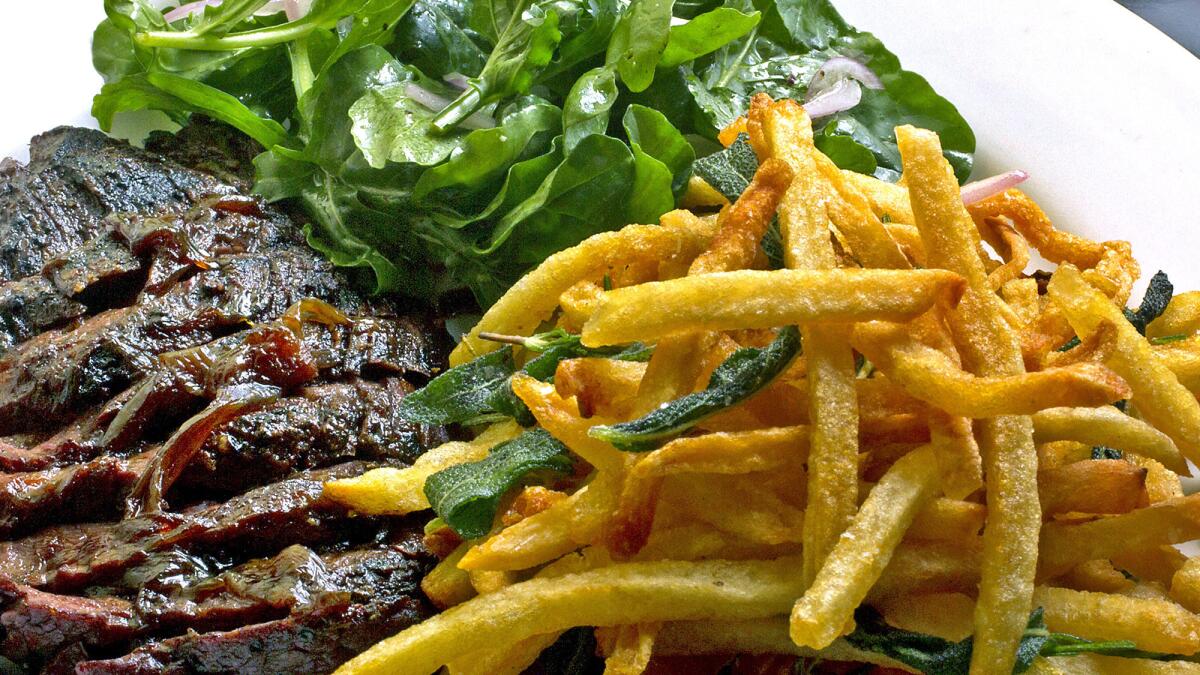
5 Lucques
When people chat about restaurant cooking, the conversation usually flirts with ingredients, influences and technique. But when it comes to the food at Lucques, the seat of Suzanne Goin's small but swelling restaurant empire, discussion tends to come around to first principles: the small but telling details that make each ingredient taste most fully of itself; the essential qualities of the French-leaning pan-Mediterranean food. I could probably go on for half an hour about a recent citrus salad: the half-dozen varieties each at the peak of its season; the way each fruit was sliced to accentuate its particular sweet-tartness or bitterness and presented at slightly different temperatures; the bland smoothness of the fresh labneh cheese and the sharp fragrance of the mint; the subtle, rubbery crunch of the chopped pistachios. The short ribs, the ricotta dumplings with English peas and the rabbit with noodles are detailed too. If you have cooked out of Goin's "Sunday Suppers at Lucques" (or have eaten family supper at Lucques on a Sunday), you know that behind her simplicity lies not just the expected California farmers market fixation but also patience and extraordinary rigor.
4 Shunji
There has never been a better time to eat sushi in Los Angeles, whether your tastes run toward the hot-rice school led by Nozawa, the Peruvian-Japanese hybrid pioneered by Matsuhisa, or Hiroyuki Naruke's purist edomae sushi at Q. But the most satisfying sushi meals of all may issue from the chili-bowl-shaped sushi bar of Shunji Nakao, who dances you across the Pacific, fish by fish, as suavely as Gene Kelly skipping down the street. You may be served an impossibly luxurious concoction of julienned raw squid, squid ink, sea urchin and black truffles; freshly made sesame tofu with a crumpled sheet of yuba; or a tangle of slivered sardines. The sushi is different every day, but the omakase will invariably include a species or two new to you: needlefish woven into a thick, fragrant braid, or even exquisite kohada, marinated just long enough to soften its fishy edge. You will find a small but beautifully composed list of the junmai daiginjo sakes that go so well with Shunji's food.
3 Mozzaplex
The consensus hit of L.A.'s meat world this year is probably Chad Colby's tomahawk chop at Chi Spacca, a monumental cross-section of pork rib, hefty as a squash racquet, rubbed with fennel pollen and grilled slowly until it glows with flavor. And Colby's coppa and lardo are the most carefully cured in town. Pizzeria Mozza is among the best pizzerias in the United States, famous for its organic ingredients and a risen, unconventionally fermented crust good enough to eat even without the squash blossoms and burrata. The Pugliese-style focaccia sold Mondays at Mozza2Go is formidable. Osteria Mozza goes from strength to strength, from the northern Italian pastas to Matt Molina's pungent roast guinea fowl, from the deep all-Italian wine list to the encyclopedic mozzarella bar commanded by co-owner Nancy Silverton. Any of the components of the sprawling Mozzaplex would be among the better restaurants in town; together, they command L.A.'s universe of urban rustic cuisine. (The usual disclosure applies here: Silverton, who runs the complex under the distant supervision of Joe Bastianich and Mario Batali, is a family friend.)
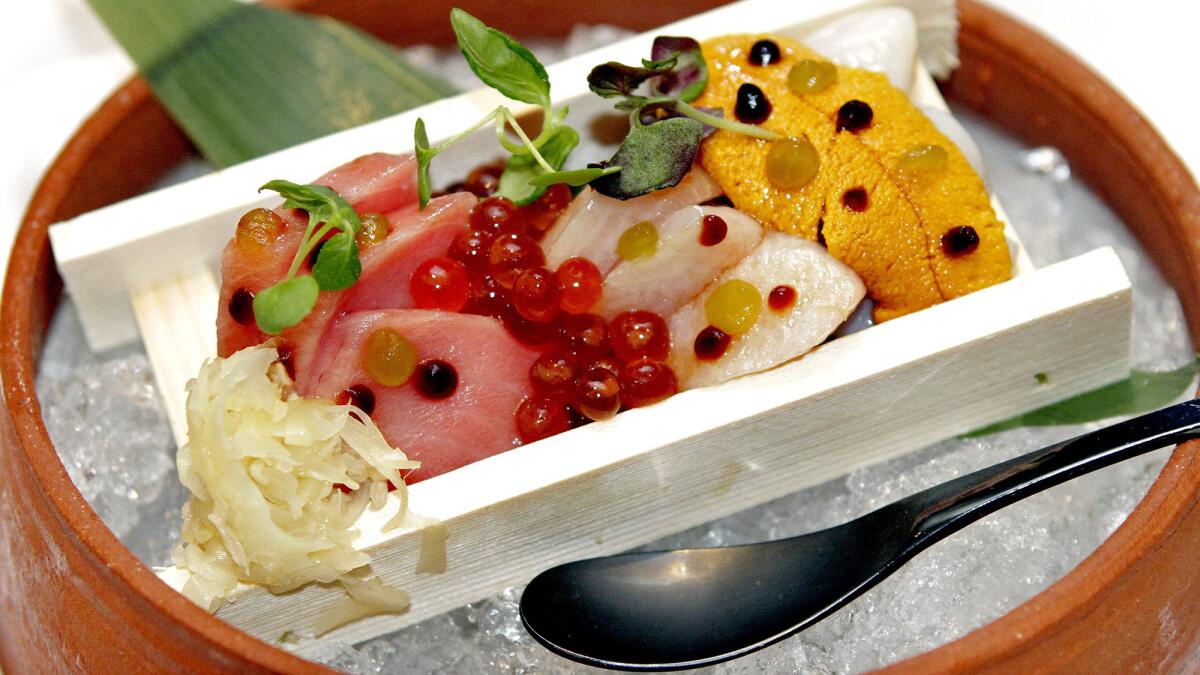
2 Spago
You have to give it to Wolfgang Puck — he is really good at this reinvention thing. So if you haven't been to Spago in a while, it may seem odd to walk into the Minimalist-chic dining room with Ed Ruscha prints on the walls, wine racks reaching halfway to space and a tasting menu that has become newly locavore — all California, anyway — with a rigor that even the hip downtown places aren't quite showing at the moment. And while you may be eating Santa Barbara sea urchin with freshly made tofu, bincho-grilled squab with charred maitake mushrooms and Sonoma lamb smoked over the foraged herb called rabbit tobacco, the table next to you may be enjoying Wiener schnitzel, a giant côte de boeuf with cheesy pommes aligot, or agnolotti with peas. Spago, the most famous restaurant in the observable universe, might have coasted forever on its 1980s fame, but Puck and his chef Tetsu Yahagi reinvented it for the second time, as a proto-modernist restaurant on the international model. But you are still at Spago. Life is good.
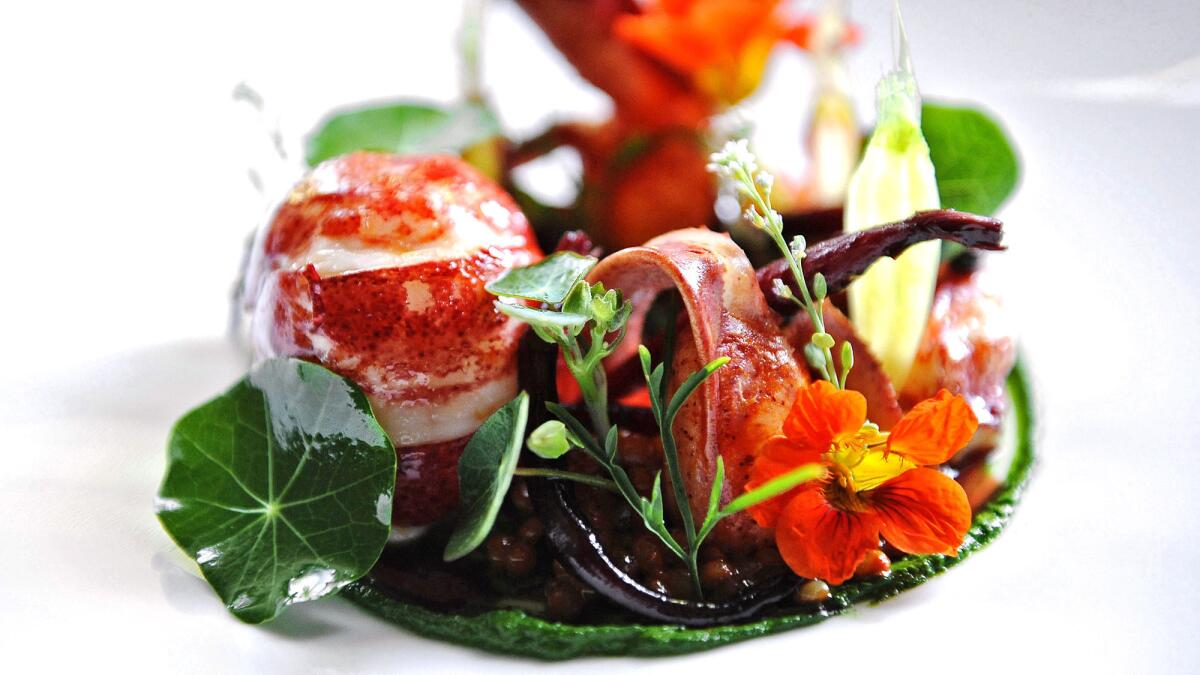
1 Providence
Once again, the best restaurant in Los Angeles is Providence, that refuge of fine dining just north of Hancock Park. Michael Cimarusti's training is in haute French cuisine, but a broad streak of Japanese kaiseki runs through his cooking. He uses only wild-caught fish (his menus are 90% seafood) and refuses to serve species, such as swordfish or bluefin tuna, considered threatened by environmental watch groups. He promotes local farmers but does not hesitate to use exotic seaweeds or imported calamansi limes when they suit a dish. He is conversant with all the latest modernist techniques, but aside from the occasional encapsulated daiquiri or sous-vide cephalopod, its use is rarely apparent. When he devises a better way to make a clam chowder or fold Santa Barbara uni into soft-scrambled eggs, he won't stop serving it for frivolous reasons, but the menu is highly seasonal, and every time you visit you are likely to encounter dishes you haven't yet seen: a botanical fantasy of nasturtium leaves folded over minced Japanese tai and garnished with its sesame-stuffed blossoms, a shot of smoked halibut broth concealing tiny spring peas, or perhaps a barely seared Santa Barbara spot prawn moistened with a sauce made from the juices from its own head and Brittany salt butter. Cimarusti may be a supremely creative chef, but his restaurant has many of the classic virtues: crisp white tablecloths, a lovely but understated dining room, a deep but surprisingly reasonable wine list and a staff intimately acquainted with his cuisine.
READ MORE:
26-50
51-75
75-101